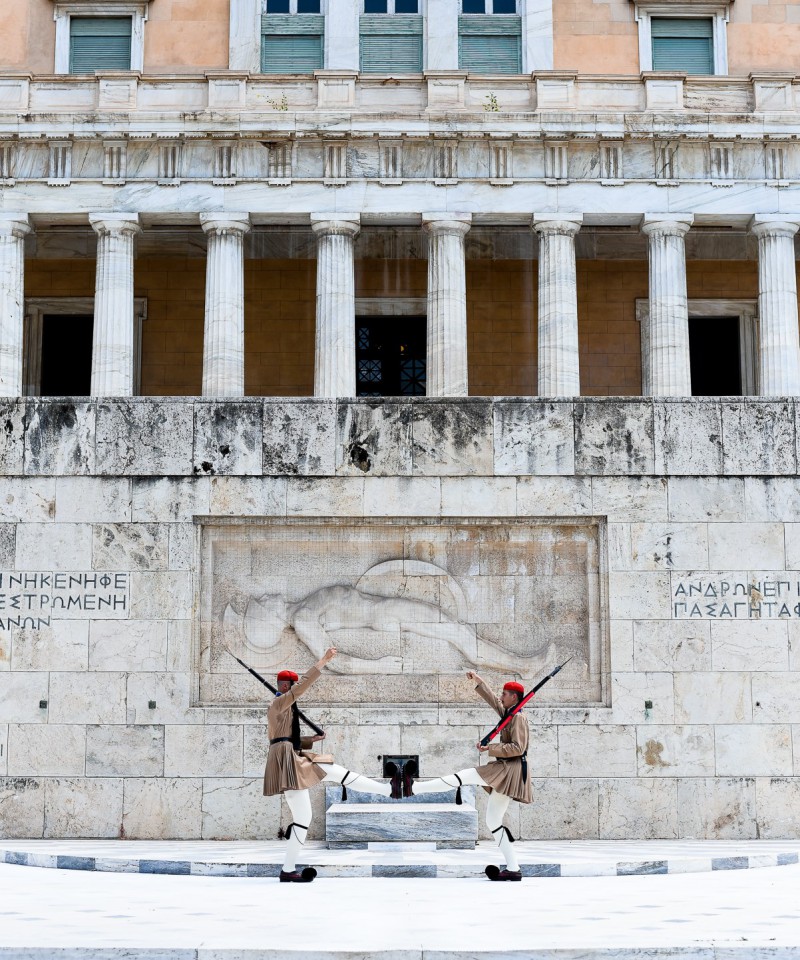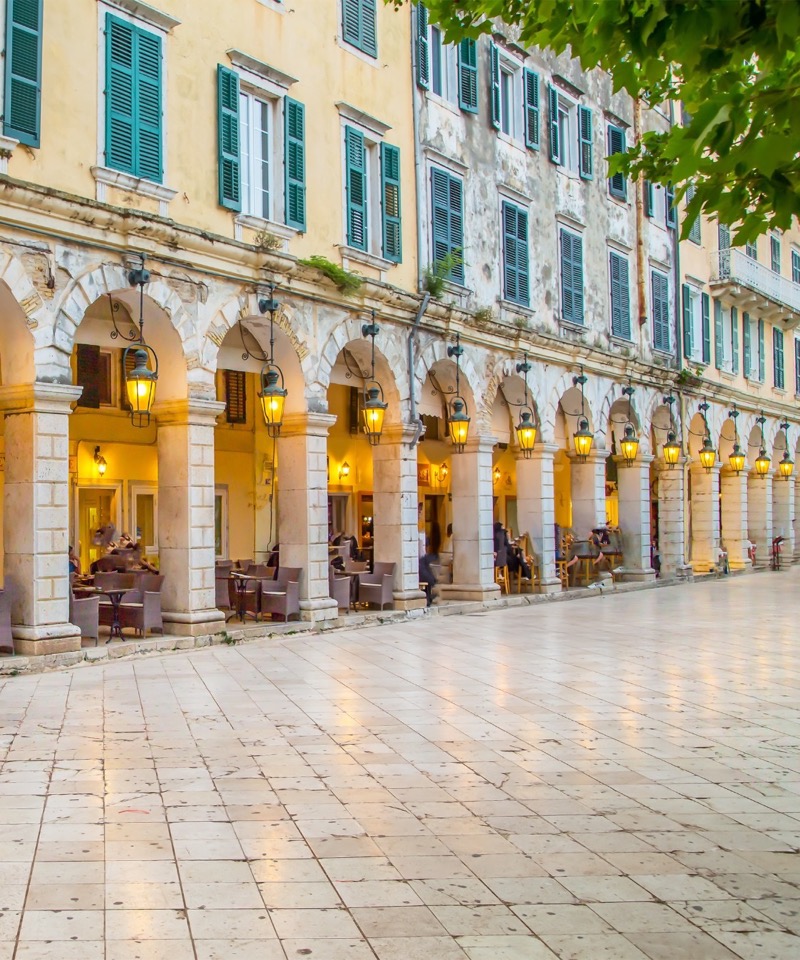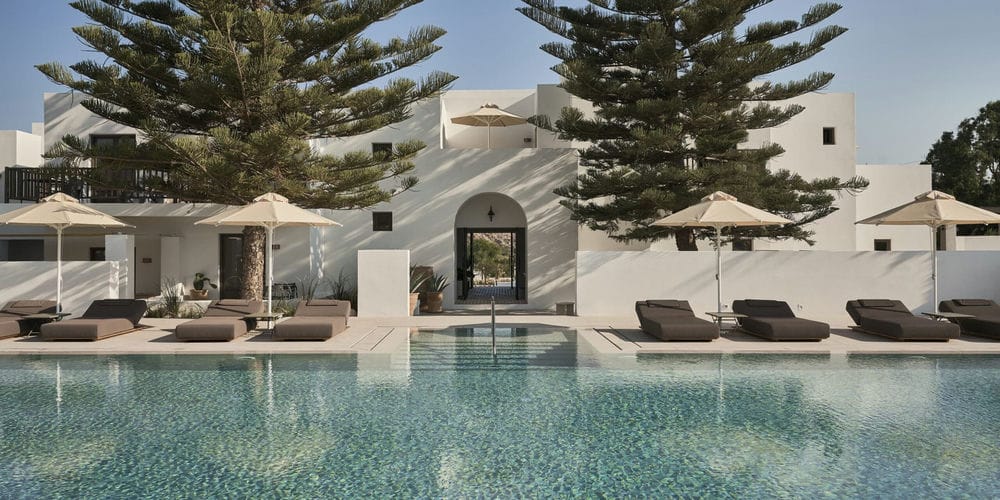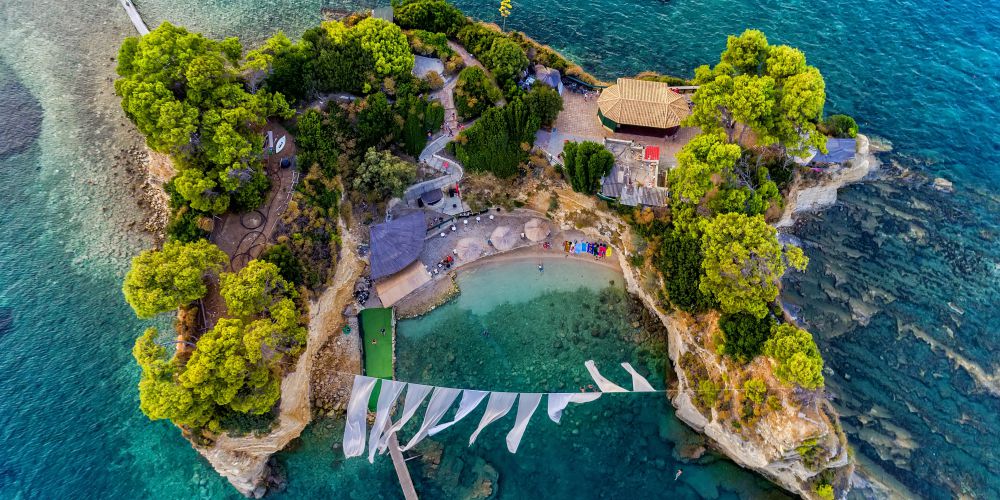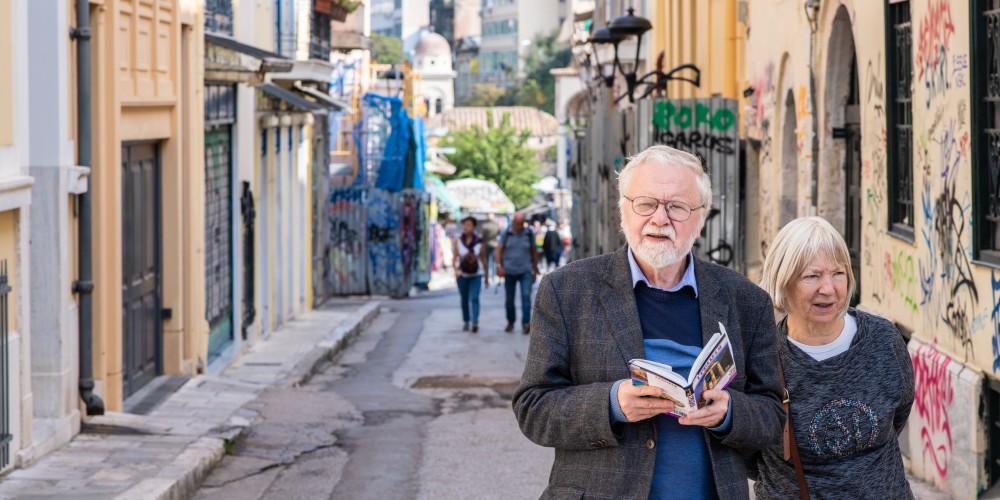
The Most Beautiful Castles in Greece
Key Takeaways
- Greece castles showcase Greece's diverse history and architectural heritage, offering visitors a chance to immerse themselves in the country's fascinating past while enjoying stunning views.
- With its distinctive architecture and strategic location, Palamidi in Nafplio offers breathtaking views of the town, the sea, and the surrounding mountains.
- Mystras is a UNESCO World Heritage Site known for its well-preserved medieval castle complex.
- Monemvasia, known as the "Gibraltar of the East," is accessed by a causeway and offers a remarkable medieval atmosphere with narrow streets, stone houses, and Byzantine-era churches.
Made by stone, anchored on hills or by the sea, restored or dilapidated, the castles in Greece have centuries of history to narrate.
Castle-lovers and admirers of the magical world of past centuries this one is for you; here are some of the most unforgettable castles in Greek history that are far from the ancient Acropolis!
The Castle of Monemvasia - Laconia
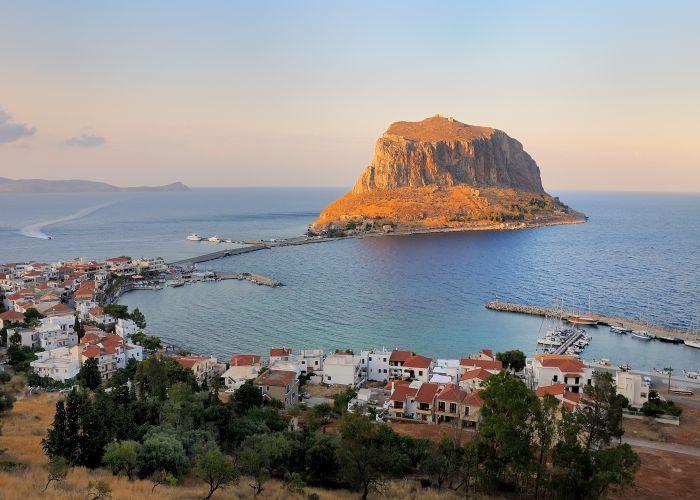
Monemvasia, one of the most aetherial locations of Greece, hosts the castle that used to fortify the Medieval old town of Moni Emvasis, which translates to 'sole entrance'.
Built on a rocky hill, with unique access from the shore through a narrow strip of land, the Venetian castle was inhabited by the Laconians in order to guard themselves against Arab invasions.
Monemvasia castle enjoyed centuries of glory until falling under Venetian and Turkis occupation in 1464 and 1715 accordingly. Today, the castle of Monemvasia and the Medieval settlement is one of the most popular tourist attractions in the region and one of the most beautiful sights in the country.
Enjoy a walk around the scenic alleys of Monemvasia castle during springtime to witness its stunning landscape in full bloom; an ideal destination if you seek peace and quiet!
Mystras - Lakonia
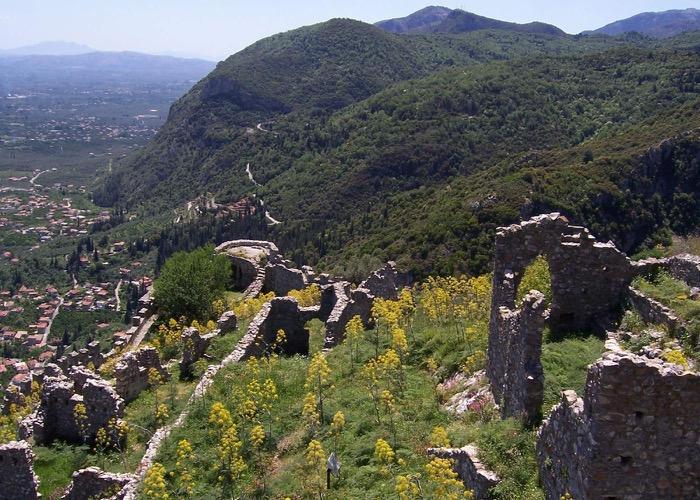
The fortified town and former municipality in Laconia, Mystras, is connected to the first fall of Constantinople in 1204 and used to be a Byzantine citadel that was built around the Byzantine fortress. The end of the Byzantine era in the story of Mystras ends in 1460 with the surrender to the Turks.
With the establishment of the modern city of Sparta by king Otto in 1834, began the movement of Mystras' inhabitants from ancient Sparta to the new town, while the last inhabitants left the castle in 1953.
Despite it now being in ruins, -although some buildings have been restored- Mystras Castle is a valuable source of knowledge of the history, art, and culture of the later Byzantine period and the whole of Greece, and by far the most important Byzantine monument in Greece. Since 1989, Mystras is on the list of World Heritage of Unesco.
The Castle of Methoni - Messinia
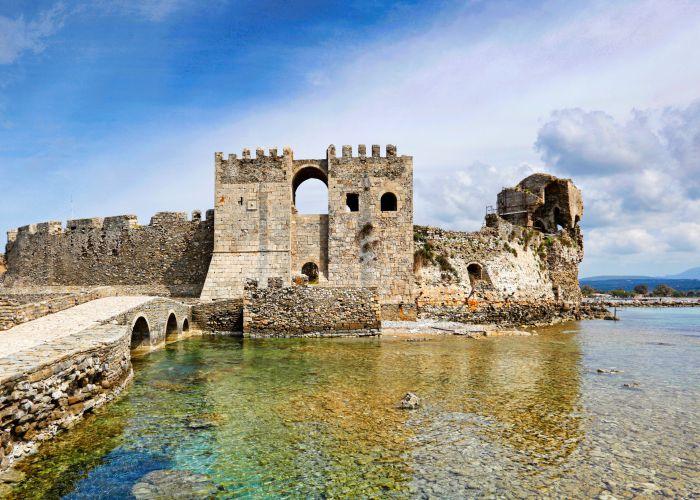
The most impressive castle in the Peloponnese was named after the Methoni Stone, according to ancient Greek traveler and geographer Pausanias. Ramparts, turrets, domes made of stone reliefs, and an impressive stone bridge of 14 arches, make up a picture of excellent Venetian architecture.
The Castle of Methoni - stretching across about 93 acres - consists of two parts: To the south lies the ancient city, surrounded by a simple wall with towers at regular intervals, while to the north, the most vulnerable part of the castle, the fort stands tall.
The two sections are separated by an intermediate low wall reinforced with five towers. The now ruined interior, inside of which you will see the traces of the Ottoman Empire, who during their rule, turned the church into a Hamam among other things, will definitely catch your eye.
However, what you are going to be fascinated by is Bourtzi, the octagonal tower situated in a rocky islet on the south side of the castle, which was used as a prison and a place of torture in the past.
Palamidi - Nafplion - Argolis
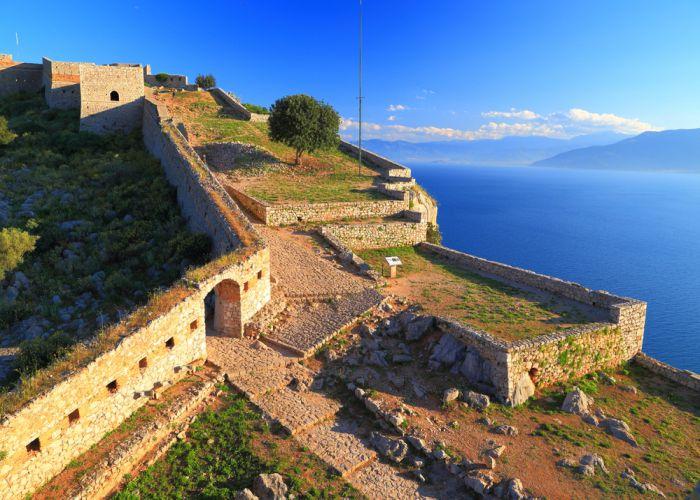
Located in the city of Nafplion, one of the most picturesque and romantic cities of Argolis and Greece in general, on a high and steep cliff 216 meters high in east Acronafplia, rises the impregnable castle of Palamidi.
It was built in 1714, on older fortifications to serve the military and naval operations of the Venetians of the time and it was named after the Homeric hero Palamedes.
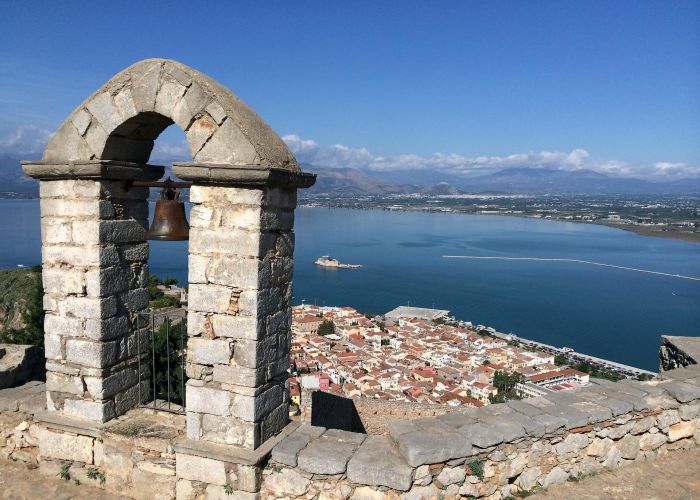
It follows the natural line of the hill and becomes one with the landscape in a way that will make you think the hill has never existed without the castle.
Today, the Greek castle and its ancient ruins remain in excellent condition and are some of the most important achievements of Venetian fortification architecture.
The Castle of Koroni - Messinia
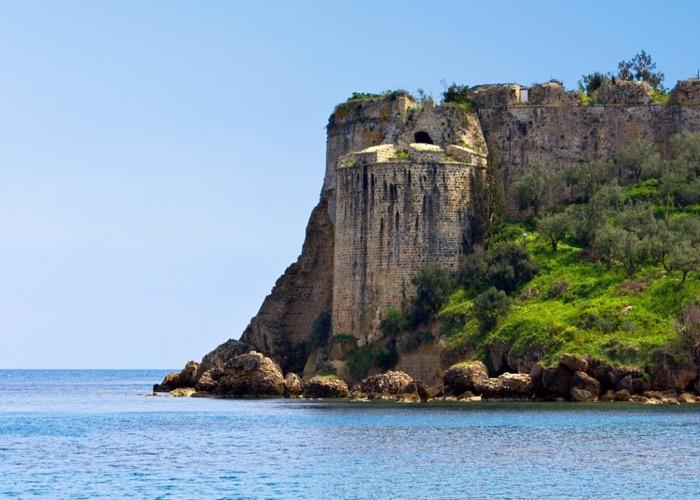
The castle of Methoni is a Venetian castle on the southwestern tip of the Peloponnese.
Despite it being built during the 6th century on the ruins of ancient Asini and rebuilt and expanded by the Venetians in the 13th century, it is still in excellent condition, more than most Greek castles.
The vast-scope castle is still inhabited today by two families, while a women's monastery is in operation. With important monuments from the Byzantine period and typical examples of the architecture of the time, the castle is influenced by the Gothic style.
At the west end of the Castle lies the Byzantine church of Agia Sophia built in the 12th century.
Molivos - Lesvos
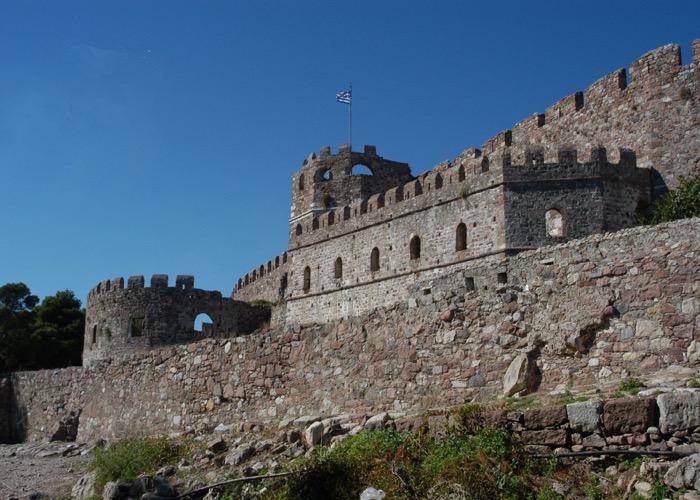
At the top of a pine-clad hill at the northeast end of the city, Molivos Castle on the Greek island of Lesvos is one of the best-preserved castles in Greece and hosts many fascinating cultural events every summer.
It is the second-largest castle in Lesvos and has an irregular trapezoidal shape. Its south and east sides are rock-based, while the other two are less steep. The main building material of the fortress walls and buildings is the native gray and reddish trachea.
Most of it is structured in the pseudo-isodic masonry system with large carved basalt stones being used. When wandering within the castle's walls, you'll discover mosques and temples, ancient baths, and other remnants of the ancient temple of Demeter.
Palace of the Grand Master of the Knights - Rhodes
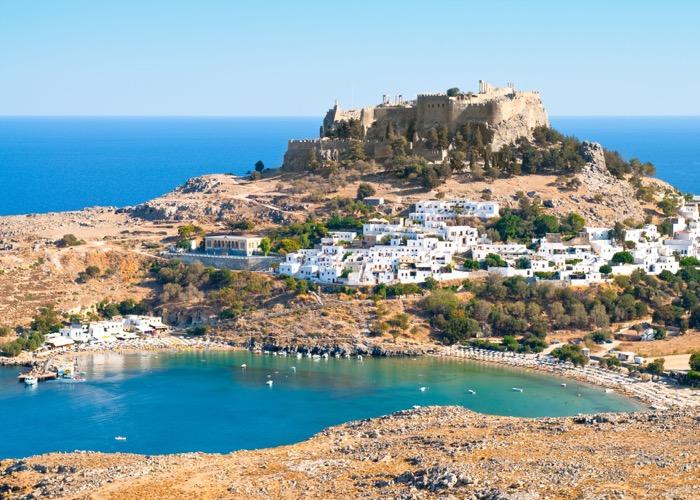
The Castle of Lindos, the Palace of the Grand Master of the Knights, was built by the Knights of St. John during the early 14th century on top of a cliff 116 meters high, where the ancient Acropolis of Lindos was located. The castle protected the island from pirate raids.
The chivalric walls, the ancient temple, the Doric portico below the theater, as well as the funerary monuments, medieval buildings, Byzantine churches, and basilicas fragments, showcase all the years that marked the history of the region.
As Lindos has been continuously inhabited over the centuries, the site of the Greek castle has uncovered archaeological finds from the archaic era and beyond, but also building activity dating back to the the14th-16th centuries.
During the Italian rule of Rhodes, the Italian architect Vittorio Mesturino restored the damaged parts of the palace between 1937 and 1940.
It became a holiday residence for the King of Italy, Victor Emmanuel III, the successor of King Victor Emmanuel II, and later for Fascist dictator Benito Mussolini, whose name can still be seen on a large plaque near the entrance.
This rich history, combined with the unique beauty and alluring landscape of the site, makes the Palace of the Grand Master of the Knights one of the most sought-after Greek castles and attractions on the island of Rhodes - alongside Rhodes' beaches, of course.
Ioannina Castle - Ioannina
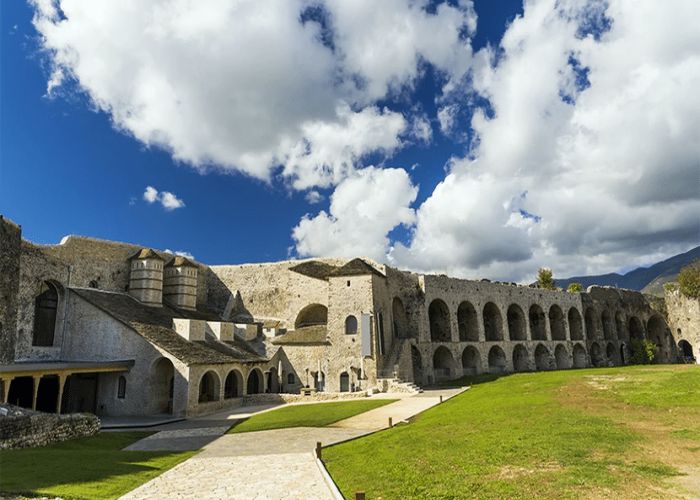
Atop an 850 m high hill, Ioannina Castle overlooks Pamvatis lakes. The original structure of Ioannina Castle dates back to the late Ottoman rule and still contains elements of an earlier Byzantine fortification. The Byzantine castle was founded by Byzantine Emperor Justinian in the sixth c.d.
After the fourth century, Ioanna flourished as the wealthy Byzantines fled there after Constantinople's sack. The Ottoman Empire captured Ioannina in 1330. During the time of Ali Pasha, it was the largest administrative center of all Greece.
The castle of Ioannina is the oldest Byzantine castle in the whole country, which is inhabited until today, which gives the feeling that you have entered a time machine as soon as you pass its big gate.
There, the feeling that you have been transported to an era full of secrets and legends is pervasive. The almost deserted cobbled alleys and the characteristic buildings-houses with colored shutters enhance the mysterious atmosphere, while a visit to the very interesting museums of the castle introduces visitors to both the history and the arts of the area.
When entering the castle, keep in mind that it is divided, into four parts: the outer precinct, the NW Acropolis with the Aslan Mosque, the SE Acropolis with Its Kale, and Kastropolitia, the old town of Ioannina.
In total, the area within its walls is about 200 acres, has a perimeter of 2,000 meters, and a width of 10 meters. There are many buildings that will pique your interest when you pass in front of them. It is like being isolated from the rest of the city and entering another world.
The Municipal Ethnographic Museum of Ioannina in the mosque of Aslan Pasha is worth visiting. Other landmarks include the Fethiye Mosque and the tomb of Ali Pasha on the northwestern citadel of Its Kale.
Kalamata Castle - Kalamata
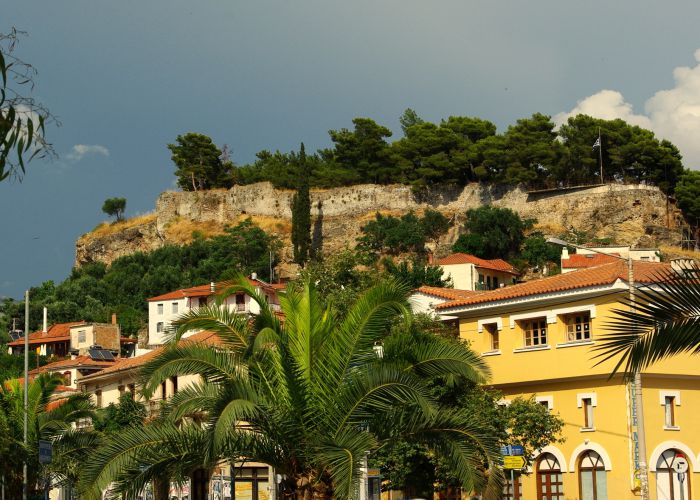
The Castle at Kalamata has a rich history and architectural heritage. As with many other Greek castles, evidence exists on the hill from a prehistoric acropolis to a later Byzantine fort.
Kalamata Castle dominates a hill that rises sharply on the north side of the city and is one of its most important monuments.
This hill is extremely strategic as on the one hand it supervises the fertile Messinian plain and on the other hand, it controls the mountain passes of Taygetos to the Laconian hinterland.
The location of the city of the ancient lighthouses is determined on and around the hill. The castle in its current form dates back to the Frankish period and has received interventions and reinforcements from both the Venetians and the Ottomans.
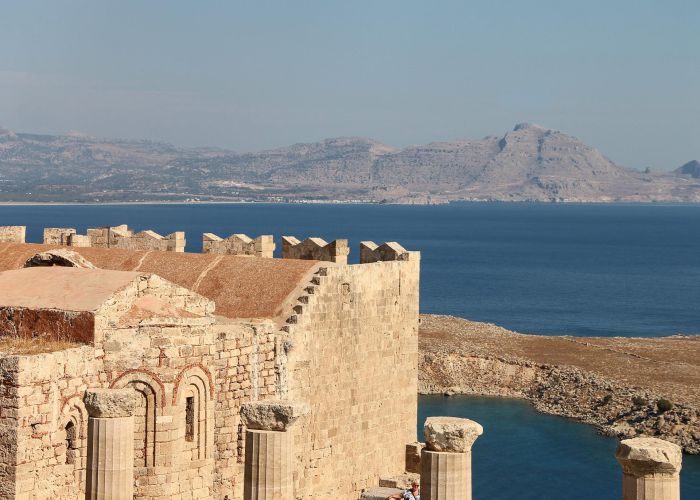
Its foundation dates back to the Byzantine era, but its current form is due to a major reconstruction by the Frankish prince and founder of the principality of Achaia, Godfrey I Villehardouin, in the early 13th century.
The castle was a hereditary manor of the Villehardouin family from 1205 to 1322. In it was born the brave knight William Villehardouin, Prince of Achaia, and his daughter, the legendary Izambo, known by the homonymous A.
The monument has the typical form of a Byzantine castle. At the top of the hill rises a tower shelter with a vaulted water tank, where temple remains have been found.
An inner fortified enclosure surrounds the top of the hill, while a second enclosure protected a larger area on the more accessible and vulnerable east side from pirate raids and other dangers.
Outside the castle, there are three temples of the 12th century. (Saints Apostles, Saints Constantine and Helen, and Saint Charalambos), which suggests that the Byzantine city extended beyond the walls.
Modifications to the castle were made by the Venetians who occupied the city during the second Venetian rule.
During the 18th c., the castle lost its strategic importance, while already at the beginning of the 19th c.it had been abandoned. In 1825, significant destruction by Ibrahim's army took place.
Mesta Castle - Chios
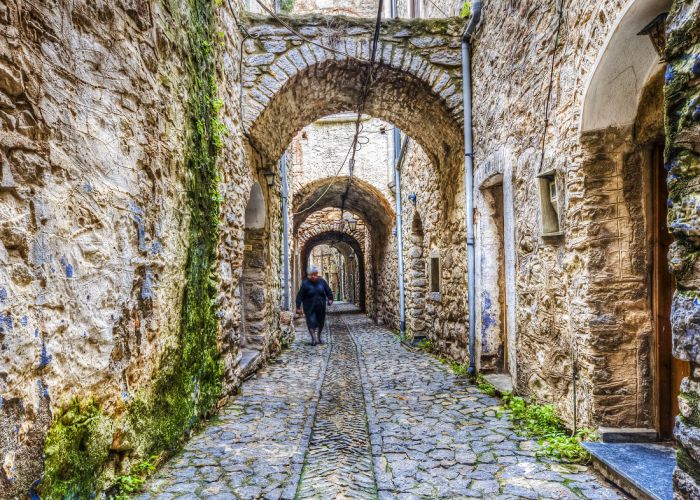
Mesta is located 35 kilometers southwest of the city of Chios and is one of the island's Mastic villages. In short, the identity of the village is as follows: an extremely well-preserved medieval town, characterized as a protected monument, an amazing combination of East and West, Genoese and Greek culture, unlike any other city in the Aegean.
Mesta dominates a small valley and was built in the Byzantine years, in a pentagonal and closed quadrilateral shape with labyrinthine inner streets.
Walking in these mini alleys, under the arches of the balconies hanging right above your head, will sometimes give the feeling that you are walking in an old fairy tale.
After all, the whole village is built into a castle. The houses, small and made of stone, are built next to each other and form a strong protective wall on the outer perimeter of the settlement.
This is also the reason why the houses did not have windows facing out. The Genoese improved the fortification of the village, which was frequently attacked by pirates.
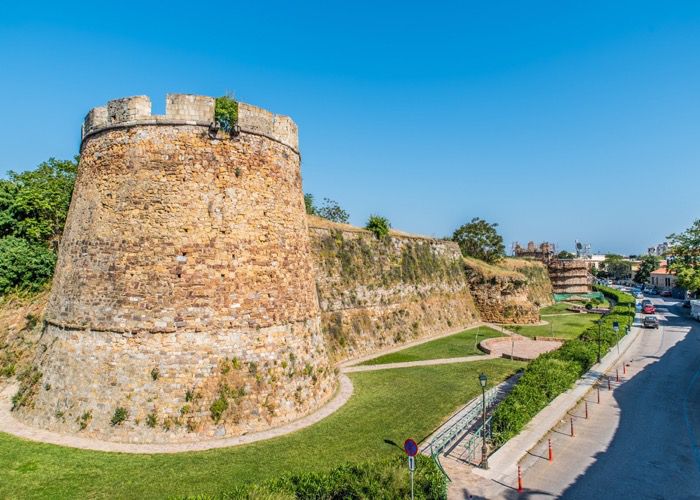
In the outer corners of the village there were - and still are - small circular towers, while the houses communicated with each other through very narrow covered passages, the domes. In fact, many of the buildings were restored with respect to tradition, keeping their architectural elements intact.
The most important attraction in the village is the church of Palio Taxiarchis, one of the oldest Christian churches in Greece. The exact date of its construction is not known but it is estimated around 1412 AD.
At first, it was a small, vaulted, single-aisled church, but when it had to meet the worship needs of the whole village, it was expanded into a two-aisled church with a single roof and cruciform arches in the northern aisle.
Next to this church is the village square, the "meadow" as the locals call it. Locals and visitors gather here for food, coffee, and sweets. Here you will taste the local Chian cuisine and some of the most famous traditional products of the island.
Chlemoutsi Castle

Chlemoutsi Castle is one of the most well-preserved fortresses of the 13th century in Greece and the Peloponnese.
The view from above proves that the castle was built in the ideal position to control both the sea passage between Ilia and Zakynthos, as well as the plain of Ilia.
Chlemoutsi is located in the village of Kastro in the Municipality of Kyllini, on the westernmost cape of the Peloponnese. As it is built on the top of a hill, it dominates the plain of Ilia.
The castle was founded in 1220-1223 by the ruler Godfrey I Villehardouin and was the strongest fortress of the Frankish principality of Achaia, which flourished during the Villardouin era.
In order to be able to carry out its construction, Godfrey came into conflict with the Catholic clergy of Achaia and used the proceeds for its construction.
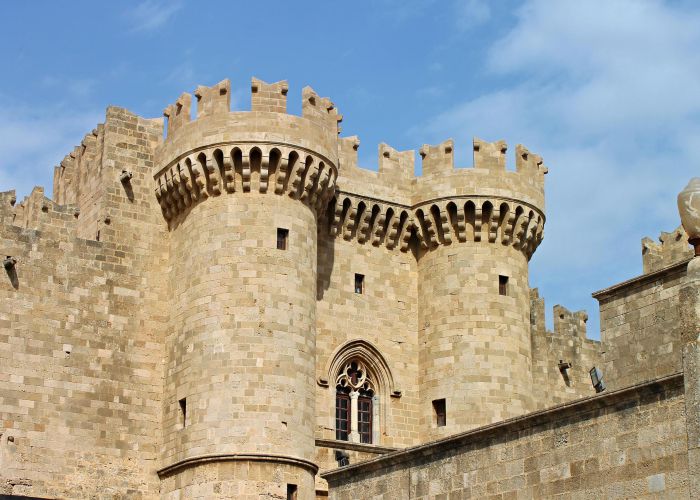
The new castle was named by the founders of Clermont, in Greek in corruption Chlemoutsi, while the Venetians later called it Castel Tornese because it was mistakenly believed that here was the Frankish mint of the Turnes.
Built in a strategic position, with an extensive view of the plain of Ilia and the Ionian Sea, it protected the capital of the principality Andravida and the important port of Glarentza.
After the death of William Villehardouin followed a period of unrest, intense disputes over the succession to hegemony broke out, and gradually the principality was led to decline. Chlemoutsi became the object of claims among various nobles.
Today Chlemoutsi still retains its strong Frankish character. Of the later conquerors, only the Turks seem to have been interested in modernizing it and doing small-scale work, mainly to adapt to the use of firearms.
Thus the castle remains one of the most important and well-preserved fortresses in Greece and is an excellent example of fortress architecture of the Frankish era in the Peloponnese.
Final Thoughts
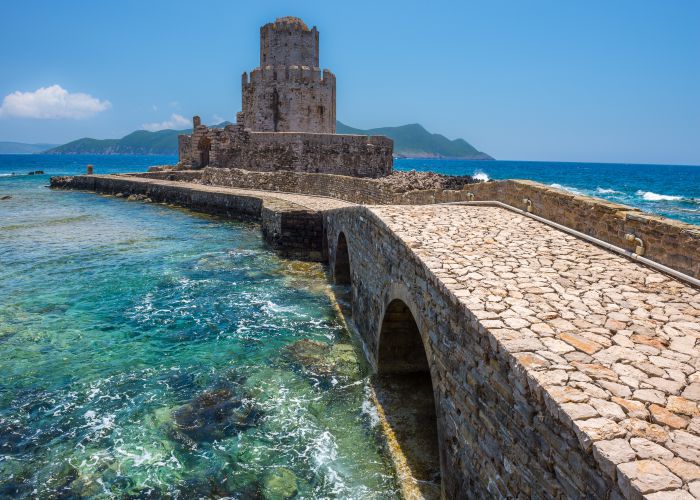
With its rich heritage, impeccable aesthetic, and fascinating architecture, the castles in Greece are many and great. The remnants of the country's glorious past are not limited to the ancient Acropolis of Athens, they are evident in the Greek castles that stand tall despite their old age.
Of course, there are many more castles in Greece than the ones mentioned above, with Querini Castle - the Astypalaia castle- Assos Castle on Kefalonia island, Fyli Fortress, and Leros Castle being just a few. However, these are our favorites.
Don't miss out on visiting one of the beautiful castles in Greece during your stay in the country, the Instagram-perfect pictures and intriguing tales you'll hear will be worth the effort! If you want to learn about Greece before traveling there, our Greece travel guide will make your life a whole lotta easier!





